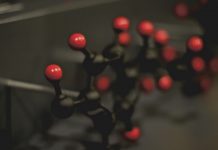The abrupt closure of the Ontario Science Centre (OSC) due to concerns over the structural integrity of its roof has sparked widespread alarm. The decision came after a report from Rimkus Consulting Group revealed that the building’s roof, constructed with reinforced autoclaved aerated concrete (RAAC), was at high risk of collapse due to water infiltration. With more than 400 public buildings suspected of using RAAC, concerns have arisen about its presence at UW.
Understanding RAAC Concrete
RAAC is a lightweight, precast concrete product that was popular from the 1950s to the 1980s due to its insulating properties and ease of use. Unlike traditional concrete, RAAC contains bubbles created by adding aluminium powder to the mix, making it significantly lighter. However, this characteristic also makes RAAC more susceptible to water damage, especially when not maintained consistently. Prolonged exposure to moisture can lead to corrosion of the reinforcing steel, compromising the structural integrity of the concrete panels.
The Ontario Science Centre’s predicament
The OSC, a landmark since its opening in 1969, was recently found to have severe structural issues related to RAAC in its roofing. According to the Rimkus report, critical and high-risk RAAC panels need urgent replacement or reinforcement to prevent potential roof collapse under snow loads. Despite the immediate safety measures and plans for extensive repairs, the province has opted to permanently close the centre and relocate its functions.
The Rimkus report identified multiple issues at the OSC, primarily due to water ingress and unreinforced field modifications in the RAAC panels. The report emphasized the need for immediate remediation to avoid sudden collapses. The cost of addressing these issues ranges from $22 million to $40 million, and the full repair could take over two years.
Plant Operations response
In light of these developments, Imprint reached out to Plant Operations to ascertain whether any of its buildings contain RAAC. Rob Hunsperger, senior director of planning, design, and construction at the university, clarified the situation in a recent statement:
“During my seven years at UW, RAAC has not been used as a building material. While I cannot guarantee with absolute certainty that RAAC was never used on campus, it is highly unlikely. Most buildings constructed between the 1950s and 1990s primarily feature cast-in-place concrete or precast concrete tees for floor structures.”
Dr. John Straube, a structural engineer who has worked extensively with RAAC, echoed this sentiment in an interview. He emphasized that the primary issue with RAAC is not the material itself but the lack of proper maintenance: “RAAC can last for a long time if protected from water. The problems at the Ontario Science Centre and other buildings are due to prolonged water exposure and inadequate maintenance.”
He noted that maintenance is often overlooked because it is not as exciting or publicly visible as new construction projects. This neglect can lead to severe consequences, as seen in the OSC case.
He also mentioned the Elliot Lake mall collapse, another example of a structural failure due to poor maintenance. In that case, water leakage in the parking garage was ignored for over a decade, ultimately leading to the collapse and loss of life. Dr. Straube stressed that proper maintenance is essential to prevent such tragedies.
To date, no evidence has been found that RAAC was used in any structures on campus. The team remains vigilant and committed to maintaining the highest standards of safety and maintenance.






























